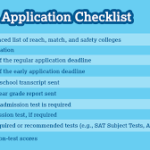Designing a homeschooling curriculum might seem challenging at first, but with the right plan, it can be a fulfilling and effective way to educate your child. A well-structured curriculum ensures your child stays on track academically while remaining engaged and motivated. In this article, we’ll walk you through simple steps to create a homeschooling curriculum tailored to your child’s unique needs.
Step 1: Know Your State’s Homeschooling Laws
Before diving into curriculum planning, research your state or country’s homeschooling regulations. Some areas require specific subjects, standardized testing, or record-keeping. Understanding these rules will help you design a curriculum that meets legal requirements.
Step 2: Understand Your Child’s Learning Style

Every child learns differently. Some prefer hands-on activities, while others excel with reading or visual aids. Observe how your child learns best and choose materials and methods that match their style. Common learning styles include:
- Visual Learners: Learn through images, charts, and videos.
- Auditory Learners: Learn through listening and discussions.
- Kinesthetic Learners: Learn through movement and hands-on activities.
- Reading/Writing Learners: Learn through reading and writing exercises.
Step 3: Set Clear Goals
Define what you want your child to achieve academically and personally. Break these goals into short-term (weekly or monthly) and long-term (yearly) objectives. For example:
- Short-Term Goal: Learn basic addition and subtraction within two weeks.
- Long-Term Goal: Complete a grade-level science curriculum by the end of the year.
Step 4: Choose a Homeschooling Method
There are many homeschooling approaches to choose from. Select one that aligns with your family’s values and your child’s needs:
- Traditional: Follows a structured curriculum similar to public schools.
- Unschooling: Child-led learning based on interests and curiosity.
- Montessori: Focuses on hands-on, self-directed learning.
- Classical: Emphasizes critical thinking, logic, and classical literature.
- Eclectic: Combines elements from different methods.
Step 5: Pick Curriculum Materials

There’s a wide range of resources available for homeschooling families. Consider your child’s learning style, your budget, and your educational goals when selecting materials. Options include:
- Textbooks: Traditional workbooks and textbooks for structured learning.
- Online Programs: Interactive platforms like Khan Academy, Time4Learning, or Outschool.
- Unit Studies: Thematic lessons that integrate multiple subjects.
- Living Books: Engaging books that make learning enjoyable.
- DIY Resources: Free or low-cost materials like worksheets, videos, and library books.
Step 6: Create a Daily Schedule
A consistent schedule helps maintain structure and keeps your child on track. Decide how many hours a day you’ll dedicate to homeschooling and allocate time for each subject. Be flexible and adjust as needed. For example:
- Morning: Math and science.
- Afternoon: Language arts and history.
- Evening: Extracurricular activities or free reading.
Step 7: Add Hands-On Activities
Make learning fun and engaging by including hands-on activities. These can include:
- Science Experiments: Simple experiments using household items.
- Art Projects: Drawing, painting, or crafting related to lessons.
- Field Trips: Visits to museums, zoos, or historical sites.
- Games: Educational games that reinforce concepts.
Step 8: Track Your Child’s Progress
Regularly assess your child’s progress to ensure they’re meeting their goals. Use a variety of assessment methods, such as:
- Quizzes and Tests: Formal assessments to measure understanding.
- Projects: Creative assignments that demonstrate knowledge.
- Portfolios: Collections of your child’s work over time.
- Discussions: Conversations to gauge comprehension and critical thinking.
Step 9: Stay Flexible
Homeschooling allows for flexibility, so don’t be afraid to adjust your curriculum as needed. If a particular method or resource isn’t working, try something new. Pay attention to your child’s interests and adapt lessons to keep them engaged.
Step 10: Connect with Other Homeschoolers
Joining a homeschooling community can provide support, resources, and socialization opportunities for your child. Look for local groups, co-ops, or online forums where you can share ideas and experiences.
Final Thoughts
Creating a successful homeschooling curriculum takes time and effort, but it’s worth it to provide your child with a personalized and enriching education. By understanding your child’s needs, setting clear goals, and using the right resources, you can design a curriculum that helps them thrive academically and personally.
Remember, homeschooling is a journey, and it’s okay to make adjustments along the way. With patience and creativity, you can create a learning experience that inspires and empowers your child.
Learn how to create a successful homeschooling curriculum tailored to your child’s needs. Discover tips on setting goals, choosing materials, and staying flexible for a rewarding educational experience.











